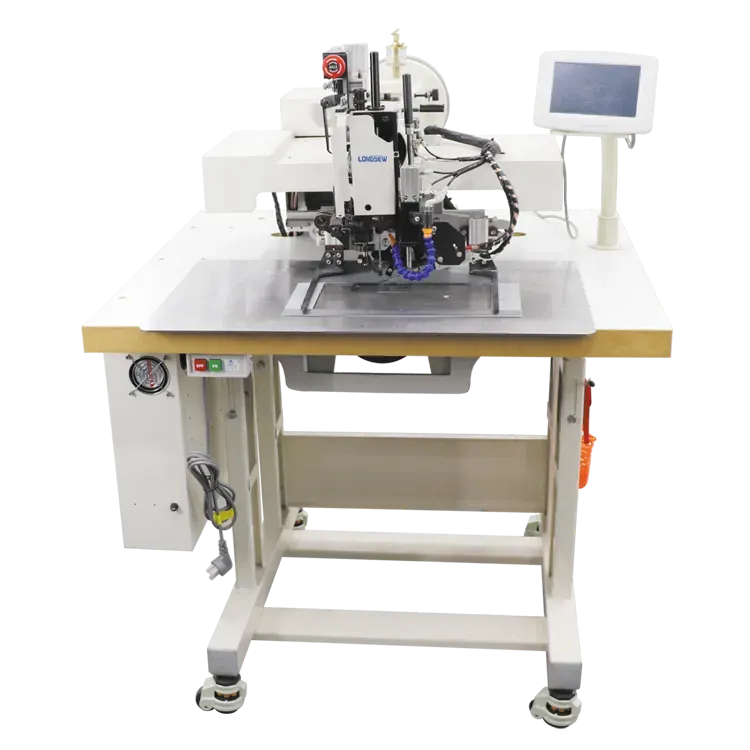Exploring the Benefits of Lock Stitch Techniques for Leather Craftsmanship
The Art of Lock Stitch Leatherwork
Leathercraft is a timeless skill, a blend of artistry and functionality that has been practiced for centuries. Among the myriad techniques used in crafting leather goods, the lock stitch method stands out for its durability and aesthetic appeal. This article delves into the intricacies of lock stitch leatherwork, exploring its significance, techniques, and benefits.
Understanding Lock Stitch
Lock stitch is a sewing technique that uses two threads—one from the top and another from the bottom—to create a secure and tightly interconnected seam. This method employs a needle and a bobbin, allowing for a tight and consistent stitch that is both reliable and visually appealing. The term lock stitch comes from the way the threads intertwine to lock each other in place, producing a seam that can withstand the test of time and use.
The Importance of Lock Stitch in Leathercraft
In leatherwork, the integrity of seams is crucial. Leather items often face significant wear and tear, and thus, the choice of stitching technique can make a substantial difference in their longevity. The lock stitch technique is especially valued in leathercraft due to its dual benefits it offers a robust seam that resists tearing while also presenting a neat finish. This makes it an ideal choice for high-quality leather products such as bags, wallets, belts, and jackets.
Moreover, lock stitch provides a level of tension that keeps the leather pieces firmly attached, reducing the risk of seams opening even under stress. This is particularly important in items that are frequently used, as the wear can compromise weaker stitching methods.
Techniques for Creating Lock Stitch Leather Goods
Creating leather goods using the lock stitch technique involves several key steps
lock stitch leather

1. Preparation of Leather Pieces Begin by selecting high-quality leather. Cut the leather to the desired shape and ensure that the edges are clean and smooth. Proper preparation lays the foundation for a successful stitching process.
2. Setting Up the Sewing Machine If you’re using a sewing machine, set it up properly with a suitable needle and thread for leather. The right needle size is crucial; too small, and it might break, too large, and it could cause damage to the leather.
3. Stitching Position the leather pieces under the presser foot of the sewing machine. Begin stitching, maintaining a consistent pace to ensure even stitches. The distance between stitches should typically be 3 to 6 mm, depending on the thickness of the leather and the design of the item.
4. Finishing Edges Once stitching is complete, the edges of the leather can be trimmed or burnished. This step not only enhances the aesthetic appeal but also protects against fraying.
5. Quality Control Inspect the sewn seams to ensure that no stitches are loose and that the seam is aesthetically pleasing. This final check is essential for ensuring durability and quality.
Benefits of Lock Stitch Leathercraft
The advantages of using lock stitch in leatherworking extend beyond aesthetic appeal and durability. This technique allows for more intricate designs, enabling artisans to create detailed patterns without compromising the integrity of the leather. Additionally, lock stitch seams tend to be more flexible than other stitching types, allowing leather items to retain their natural movement and comfort.
In conclusion, lock stitch leatherwork exemplifies the harmony of tradition and craftsmanship. As artisans continue to embrace and refine this technique, the legacy of lock stitch leather goods remains strong, ensuring that these beautifully crafted items endure for generations. Whether you are a seasoned leatherworker or a beginner, mastering the lock stitch will undoubtedly enhance your skills and elevate your leathercrafting endeavors.
-
Industrial Cylinder Arm Sewing Machine: Revolutionizing Heavy-Duty SewingNewsJul.28,2025
-
Cylinder Arm Sewing Machine: Perfect for Special Sewing ApplicationsNewsJul.28,2025
-
Cylinder Bed Sewing Machine: Essential for Sewing Complex MaterialsNewsJul.28,2025
-
Heavy Duty Sewing Machine: The Essential Tool for Industrial ApplicationsNewsJul.28,2025
-
Computerized Pattern Sewing Machine: Revolutionizing Precision StitchingNewsJul.28,2025
-
Heavy Duty Industrial Sewing Machine: Power Meets PrecisionNewsJul.28,2025
-
Leather Sewing Machine: The Industrial Standard for Tough MaterialsNewsJul.18,2025





























